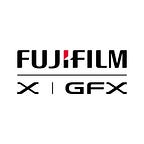Essential Studio Equipment and Techniques
In the penultimate article of the series, Andrew Tomasino delivers advice on gear and technique — two crucial aspects for any photographer with their sights set on the role of first assistant
Having a firm handle on the tools of the trade — and knowing how to use them — is essential to a photographer of any level. For those hoping to make it a career, that importance can’t be overstated. For those just starting this journey, what is the best way to prepare for that first day on set? What might give an advantage when trying to secure a new role? And what can you bring to your image making beyond the technical?
Getting Equipped
“When I started, my only tool was a tiny compact system camera,” remembers Andrew. “If you look back at those photos, you’ll see the camera struggling to adapt to dark music venues.
“It was only when I started wedding photography that I got my hands on an early DSLR. And there were some lighting tools, like monoblocs and reflectors, I was able to start experimenting with. Everyone starts with a reflector.”
These days, things are very different. Mirrorless cameras from FUJIFILM X Series and GFX System are more than capable of documenting a dingy venue, and it’s not unusual for a beginner photographer to have a light of their own.
According to Andrew, it’s a change that has reshaped the industry, and the degree of accountability for those breaking into it.
“With so many tools, the responsibility is tremendous,” he says. “Once you get started, you’ll learn the industry standards on set — which is mostly Profoto lighting and Capture One for the cataloging. It’s beneficial to know a little about those essential systems beforehand.
“Modern lights are so easy to use that you can’t really go wrong. It’s not as much of a hardship to gain a baseline level of competence as it once was and there are plenty of resources online to help you achieve it.”
The gear you own comes down to personal preference, though.
“My lights are all Profoto monolights. They are well-made and you could afford them working as an assistant over a couple days, which feels like a good trade. You work a day or two, then you get a light and can make different pictures.
“My cameras and lenses are all Fujifilm. I’ve been using GFX100S most recently, which is incredible. I’ve always been happy to create with any tool, but I wanted more resolution and needed consistent colors and accurate skin tones — and that’s what I get with Fujifilm. ACROS black & white processing is also the best I’ve found for digital files made in-camera.”
While lights may have become easier to use over time, knowing how to make the most of them is just as challenging as ever.
The Stripped-back Approach
There are all kinds of looks in photography — particularly within studio portraiture. If there weren’t, we wouldn’t find it half as exciting. In part two of this series, Andrew explained what it takes to develop a creative vision — and find your own inspiration. Let’s dive deeper into that practical process.
“I’ve been on a lot of sets with a huge amount of lighting. On one job in Budapest, there were around 40 units in sync. They served a very necessary purpose in the moment, but was I excited about it? No, I was terrified!” Andrew laughs.
“Through these experiences, I’ve found a lot of excitement blending available light with only small amounts of fill provided by external flashes — just a handful of extra sources. I’ve drifted away from using huge setups in my own style, but you need a level of technical groundwork first in order to leave it behind. At the end of the day you have to deliver what clients want. Were it not for assisting, I’d have none of that knowledge, and would not know how to utilize the huge setups if I needed to.”
So, where to start?
“Before adding anything, look at your ambient light and assess it,” says Andrew. “I tell people, if I could wave a finger through it and give it a taste, I would! Then, add one light at a time.
“It’s all about layers. I love a high-contrast, deep-shadow look — but whatever the style, it’s about the marriage of key and fill.”
If in doubt, drawing from a surefire bag of tricks is the best advice.
A softbox is a great place to start. Rembrandt lighting is a striking studio staple. An umbrella angled 45° from camera is another classic styling.
“One amazing tip I was given recently is to move your source around,” Andrew enthuses. “Often, we set up our lights and let them live there forever, as though the relationship between us and the light can never change.
“I’m in the practice of walking around the light, looking at the subject in it, and snapping quick images. The composition might not be great off the bat, but if the light does something different, I’m all for it. When it does, I start to compose good frames.”
Among so much functional advice, there’s still room for wisdom.
“Often, the best tool in your kit bag is the five-minute window with your subject before you start photographing. I ask, ‘Who am I in front of?’ and try to relate the light to that.”
In the final article of this series, Andrew discusses bridging the gap between first assistant and full-fledged professional.
Get more education, inspiration, and insight from the world of photography on the FUJIFILM Exposure Center.
